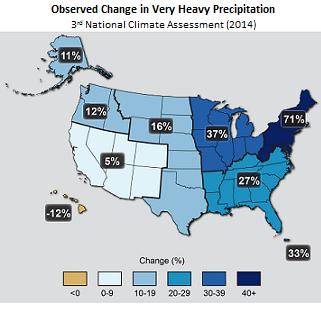by Bradford McCormick
On March 15, 2010, ASTM International approved its Standard Guide for Financial Disclosures Attributed to Climate Change (“ASTM Guide”). The ASTM Guide was released a little over one month after the Securities and Exchange Commission issued its final Guidance Regarding Disclosure Related to Climate Change (“SEC Guidance”), and the application of the two guidance documents may have caused some confusion. The SEC Guidance clarifies when and how public reporting companies are required to disclose climate change related risks in SEC filings under Regulation S-K. The ASTM Guide also targets “reporting entities,” but its purpose is to “provide a series of options or instructions consistent with good commercial and customary practice,” not to provide guidance on what the law requires.
It is important to note at the outset that the ASTM Guide is voluntary and does not provide an alternative method of disclosure to SEC-regulated companies, which must comply with the SEC Guidance and Regulation S-K. While ASTM standards are frequently adopted by reference in regulations, as well as in private contracts,[i] the ASTM Guide seems unlikely to become more than a voluntary resource, at least in its current iteration.
What the ASTM Guide does offer is an additional frame of reference for companies considering disclosure of financial impacts related to climate change. The ASTM Guide is also something of a bellwether: because ASTM standards are developed by consensus in committees of stakeholders,[ii] the Guide is a strong indication of the manner in which companies around the world are thinking about climate change disclosures.
The ASTM Guide provides a list of six examples of “major circumstances” that might give rise to climate change related financial impacts that should be disclosed. These six examples are similar to the four categories listed as examples in the SEC Guidance.[iii] Once a company has identified potential climate change impacts, the ASTM Guide provides a step by step guide to determining whether to disclose:
- Determine if the potential impacts:
- have a likelihood that is “more than remote”;
- could be large enough to disrupt normal operations or cash flows; and
- “are near-term, occurring during the next year.”
- If the criteria above apply, estimate the likelihood, magnitude, and timing of the potential impacts.
- Evaluate the potential impacts, in the aggregate, to determine materiality. Material impacts should be disclosed.
- Even if the company believes the impacts are so speculative that it cannot quantify their effects, the company should include a description of the types of impacts it foresees and the company’s reasoning for determining that quantitative analysis is not feasible.
For more information on the ASTM Guide and the SEC Guidance, and resources for climate change related financial disclosures, please see CCCL’s Climate Change Securities Disclosures Resource Center
[i] For example, the National Institute of Standards and Technology’s Standards Incorporated by Reference Database counts 1,885 instances of ASTM standards incorporated in the Code of Federal Regulations, and 502 instances of ASTM Standards incorporated in federal government procurement practices.
[ii] See ASTM International Frequently Asked Questions.
[iii] The four categories of potential climate change related financial impacts that the SEC Guidance lists are:
- impact of legislation and regulation
- international accords
- indirect consequences of regulation or business trends
- physical impacts of climate change
The ASTM Guide’s categories are more specific and numerous, but the SEC Guidance’s categories 3 and 4 are broad enough to make the subjects covered substantially the same. The one category that ASTM adds that the SEC’s categories do not cover is #4, below:
- enforcement of laws or regulations
- predicted changes or trends in resource costs or availability
- predicted changes in company assets due to financial impacts attributed to climate change
- contractual assumption of risk or risk transfer agreements, such as insurance contracts, indemnity agreements, and similar documents
- legal liability related to climate change
- information known by the entity indicating that financial impacts attributed to climate change have been incurred or are likely to be incurred



